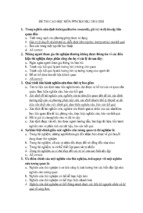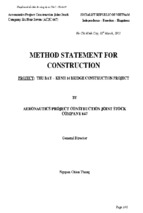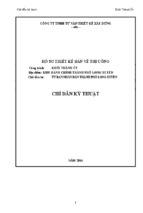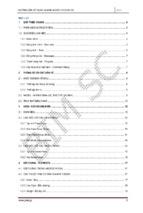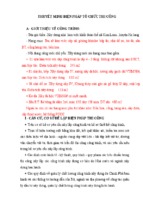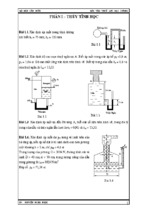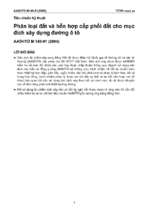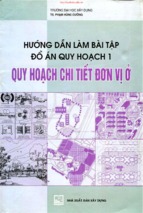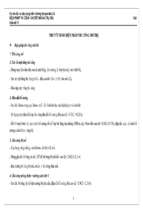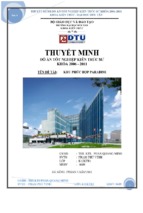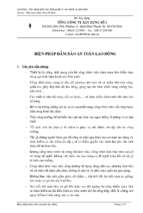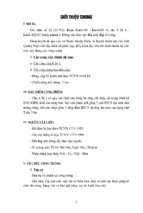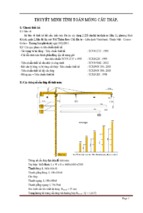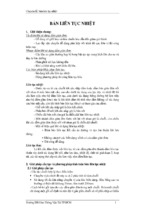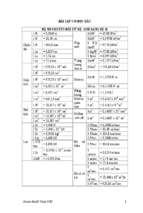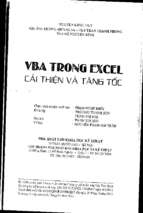Glossary of
Road Design
and
Construction Terms
Nebraska ◆ Department ◆ of ◆ Roads
3-C Planning
The continuing, cooperative, comprehensive planning
process in an urbanized area as required by federal law.
(e.g. Lincoln, Omaha, or Sioux City Area Planning)
3R Project
3R stands for resurfacing, restoration and rehabilitation.
These projects are designed to extend the life of an
existing highway surface and to enhance highway safety.
These projects usually overlay the existing surface and
replace guardrails. 3R projects are generally constructed
within the existing highway right-of-way.
Abutment
An abutment is made from concrete on piling and
supports the end of a bridge deck.
Access Control
The extent to which the state, by law, regulates where
vehicles may enter or leave the highway.
Action Plan
A set of general guidelines and procedures developed by
each state to assure that adequate consideration is given
to possible social, economic and environmental effects of
proposed highway projects. All states were directed to
develop this plan by the Federal Highway Administration.
Adapted Grasses Grasses which are native to the area in which they are
planted, but have adjusted to the conditions of the
environment.
Adverse Environmental Effects
Those conditions which cause temporary
or permanent damage to the environment.
Aesthetics
In the highway context, the considerations of landscaping,
land use and structures to insure that the proposed
highway is pleasing to the eye of the viewer from the
roadway and to the viewer looking at the roadway.
Aggregate
Stone and gravel of various sizes which compose the
major portion of the surfacing material. The sand or
pebbles added to cement in making concrete.
Aggregate Base Course
The layer of material immediately beneath the
pavement. It may be composed of crushed stone, crushed
or uncrushed sand and gravel, or combinations of these
materials. To provide the service intended it must be
uniform in strength to support the pavement.
Air Pollutants
Those impurities which cause the atmosphere to become
contaminated. These include: carbon monoxide, nitric
oxides, sulfur dioxides, particulates, and hydrocarbons.
1
Air Pollution
The presence of contaminating particles in the air which
interfere with a person’s health, safety or comfort,
personal property, plants and animals.
Air Rights
The property rights for the control or specific use of a
designated air space involving a highway.
Alignment
The vertical and horizontal location of a road.
Alternate Routes The various general highway locations examined in
corridor studies to determine the best alignment for a
highway.
Ambient Air
Any unconfined portion of the atmosphere; the outside air.
Apportionment
Method used to determine the share of funds each state
highway administration receives from the Federal
Government.
Archeological Salvage Program
Program to protect Indian sites or
locations of historical interest which will be disturbed by
plowing, leveling, clearing, dozing, etc., for excavation and
investigation by professional archeologists.
Archeology
The scientific study of material remains of past human life
and activities.
Arterial
A general term denoting a highway primarily for through
traffic, usually on a continuous route.
Asphaltic Cement Brownish black, solid or semisolid mix of bitumens from
native deposits or a petroleum by-product used in the
manufacturing of asphaltic concrete.
Average Daily Traffic or ADT
A measurement of the number of vehicle
which use a highway over a period of a year divided by
365 to obtain the average for a 24-hour period.
Backfill
Material used to replace, or the act of replacing, material
removed during construction. Also, may denote material
placed, or the act of placing material adjacent to
structures.
Backslope
The slope from the bottom of the ditch to natural ground,
on the opposite side of the foreslope.
(see Foreslope page 13)
BAM
Bituminous Aggregate Mixture
2
Band of Interest
The area included in a corridor study which will be
examined for the best alignment.
Berm
A raised mound of earth used in different ways; as a site
barrier, used to separate the roadway embankment from
a drainage way, as a sound barrier, or for architectural
reasons.
Bicycle Lanes
Portions of a roadway set aside for bicycle use, with the
lanes distinguished from the motor vehicle portion of the
roadway by painted stripes, curbs, or parking blocks.
Bicycle Routes
There are three types - Bicycle Trails, Bicycle Lanes and
Shared Roadways.
Bicycle Trails
Separate paths or trails intended for the exclusive use
of bicycles. When such a path is part of a highway, it is
separated from the roadway for motor vehicle travel by
an open space or barrier.
Bitumen
A natural asphalt or substance found in a natural state or
a residue by-product from petroleum refinement.
Bituminous
Containing Bitumen
Board of Public Roads Classification & Standards This Board develop
minimum design, construction and maintenance standards
for each functional classification of public roads and
streets. The 11-member board is appointed by the
Governor and approved by the legislature for 4-year
terms. Two members represent the NDOR.
(Contact the Government Affairs Division for more information.)
Borrow Excavation
When the Department specifies a new roadway to be
constructed, the roadway embankment is usually
constructed from earth available on the right-of-way,
however, if there is insufficient earth the contractor is
required to obtain the needed additional material from off
the state’s right-of-way (land). This material is called
borrow excavation
Borrow Pit
The source of approved material required for the
construction of embankments, or other portions of
earthwork requirements.
Borrow Pit Restoration
Returning the area used for borrow to a
usable condition.
3
Box Culvert
A box culvert is cast-in-place or pre-cast reinforced
concrete and has a box shape that is located under the
embankment to drain water from one side of the road to
the other.
Bridge Deck Scarification
To remove the existing concrete bridge driving
surface in preparation for a concrete overlay. This is
usually done with a cold milling machine consisting of
hardened steel bits attached to a revolving drum.
Bridge Pier
A bridge pier is a supporting structure at the junction of
connecting spans of a bridge.
Buffer Zone
The area 15 feet from the edge of the roadway surface
including the rest of the right-of-way which is planted with
native and adapted grasses and provides habitat for
wildlife.
Bypass Routes
An arterial highway that permits traffic to avoid part or all
of an urban area.
Capacity
Maximum number of vehicles which has a reasonable
expectation of passing over a given section of a lane or a
roadway in one direction during a given time period under
prevailing roadway and traffic conditions.
Cement
A powdered product made by grinding clinkers of
limestone, clay, and other materials, and which reacts
with water to form a rock like substance used to bond
aggregates together in concrete.
Centroid
An assumed point in a zone that represents the origin or
destination of all trips to or from the zone. Generally, it is
the center of trip ends rather than a geometrical center of
zonal area. (Also called Zone Centroid)
Channel
Path in which water will or does flow.
Channel Change
The change in direction of the natural path of water flow,
usually for a short distance.
Channel Clean Out
The removal of debris, soil deposits, or heavy brush
in an existing path of water flow.
Channel Excavation
When the Department builds a new bridge or
drainage structure over an existing waterway it is
sometimes necessary to dredge out or straighten the
existing waterway channel. This work is called channel
excavation.
4
Channelization (of road)
The direction of the traffic flow into definite
paths, by means of traffic markings, islands, or other
means.
Cofferdam
When the Department specifies the construction of a
bridge pier in, or adjacent to a stream, the contractor may
be required to drive sheet piling into the stream, creating
a cofferdam. The mud and additional stream bed material
that must be excavated prior to the construction of the
pier is called cofferdam excavation.
Cold Milling
To prepare an existing bridge deck or roadway pavement
for resurfacing, the department sometimes creates a new
roadway cross section and profile by cold milling the
existing surface with a machine that has hardened steel
bits in a revolving drum.
Collector
Consists of a group of highways and/or streets which
pick up traffic from many local or land-service roads and
carry it to community centers or to the arterial system.
They are the main school bus routes, mail routes, and
farm-to-market routes.
Collector Street
A street which serves the internal traffic movement within
the city and connects with the major arterial system.
Commodity Flow Path that products follow because of division of labor and
specialization. For example, oranges are produced in
Florida and travel to other states for consumption.
Community Participation
Participation by the public in the highway
planning process at orientation, information and public
hearing meetings, membership on committees, and
through participation in surveys and interviews.
Community Values
The social, economic and environmental factors
unique to a given community.
Concrete
Concrete is a building material made of sand and gravel
bonded together with portland cement into a hard,
compact substance.
Concrete Revetment Mats
As an alternative to concrete riprap along a
ditch or waterway bank, sometimes a concrete revetment
mat will be used. The mat is a heavy fabric envelope
which is pumped full with cement mortar that hardens
and conforms to the shape of the surface upon which it
is placed.
5
Connecting Link
A roadway on the state highway system which extends
between and junctions with two other numbered routes
on the state highway system. Such roads are usually
relatively short in length.
Construction Costs
Those costs after the contract has been let. This
includes engineering, survey, inspection, in addition to
those actual construction costs. The written contract
between the Department and the contractor setting forth
the obligations of the parties, including, but not limited to,
the performance of the work, the furnishing of labor and
materials, and the basis of state highway payment.
Contract Specifications
The requirements which are to be followed in the
construction of highways.
Cordon Line
An imaginary line encircling a survey area defining the
limits of the internal survey and location of external traffic
survey stations.
Cordon Stations
Stations located on each street crossing the cordon line
where vehicles were counted and classified during survey
hours.
Cordon Survey
A roadside-interview type of study in which drivers are
stopped and questioned about origin and destination of
their trip and its purpose. The interviews are conducted at
stations on the external or internal cordons, or on both.
Correlation
An interdependence between variables.
Corridor
An area of variable width between two points. In highway
work, corridors are defined areas where the needs for
improvement are studied.
Corridor or Location Public Hearing
Public hearing held by the
Department of Roads to inform the public and obtain their
views on a proposed project location.
Corridor Study
The study of corridor locations, social, economic and
environmental considerations, and alternatives for an area.
Cost Benefit Ratio
A method of determining the economic justification of
alternative schemes for highway system improvements.
The benefits and respective costs for each alternative
are determined and the ratio of benefits to cost for each
project is compared to the others.
6
County Roads
Those roadways which are constructed and maintained
primarily by county governments and which are not on the
state highway system.
Cul-de-sac
A local street open at one end only, which allows vehicles
to turn around.
Culvert
Any structure, not classified as a bridge, which provides
an opening under the roadway.
Dead End
A local street open at one end only and with no special
provisions for turning around.
Decibel
A unit of sound measurement.
Deck Slab Repair The wearing surface of a bridge must first be repaired
before it receives a new wearing surface. The deck slab
repair usually consists of partial and full depth patching
followed by resurfacing.
Defense Access Funds
Federal funds are available without regard to
apportionment among the states for paying all or any part
of the construction and maintenance of defense access
roads (including bridges, tubes, and tunnels) to military
reservations, to defense industries and defense industry
sites, and to the sources of raw materials. The funds
may be used to replace existing highway and highway
connections, or to upgrade roads used for military
purposes.
Department of Roads
Nebraska’s state highway agency which has the
responsibility for initiating and carrying forward the
planning, design, construction, and maintenance of
highways on the state and federal highway systems.
Referred to as the Department.
Design Capacity
Maximum number of vehicles which can pass over a lane
or roadway during one hour without operating conditions
falling below a preselected design level.
Design Hourly Volume
A volume determined for use in design
representing the traffic that is expected to use the
highway in any designated year. It is an hourly volume,
usually the 30th highest hourly volume expected during
the design year.
Design Life
Initially figured to be a 20-year period for pavement.
Design Phase
The development of a project from the conclusion of the
corridor location work to the completion of final plans.
7
Design Public Hearing
Public hearing held by the Department to inform
the public and to obtain their views on the design
features of a project.
Design Speed
A speed determined for design and correlation of the
physical features of a highway which influence vehicle
operation.
Design Standards
Specifications for such design features as curvature,
grades, roadway width, drainage facilities, etc.
Design Volume
A volume determined for use in design, representing
traffic expected to use the highway 20 years in the future.
Unless otherwise stated, it is an hourly volume.
Design Year
Year of initial construction, plus 20 years.
Destination
The zone in which a trip ends.
Detector Loop
New traffic signal installation contracts usually include the
construction of a wire detector loop placed under the
surface of the pavement in the approach area of the
intersection. When a motorist drives over the detector
loop, the time phase for the light is affected.
Detour
The route used for through traffic around construction
areas.
Diffusion Models A mathematical model to estimate pollution concentrations
from a specific source.
Dikes
A bank, usually of earth, constructed to control or confine
water.
Divided Highway A highway with separated roadways for traffic in opposite
directions.
Draft Environmental Impact Statement
A preliminary written summary of
the probable effects a highway project will have on the
environment, especially the human environment.
Drain Tile
An underground pipe to handle water from a farm field or
used to fix areas on the right-of-way to lower water
tables.
Drainage Easement
Easement for directing the flow of water.
Drainage Structure
Those structures other than drains, levees, and
pumping plants which are intended to promote or aid
drainage. The term includes catch-basins, bulkheads,
spillways, pipe outlets, etc.
8
Drop Structure
A particular type of drainage structure used to carry water
under or away from the roadway with a vertical drop built
into the structure.
Earth Excavation On a construction project that requires new or relocated
roadway, the earth which must be moved from one place
to another is called earth excavation.
Easement
A right to use or control the property of another for
designated purposes. For example, drainage easement,
planting easement, scenic easement, sight line easement
and slope easement are five types of easements in
connection with highways. Easements may be either
temporary or permanent.
Ecology
The inter-relationships of living things to one another and
to their environment, or the study of such interrelationships.
Economic Interaction
Mutual impact between the community and a road
or project.
Ecosystem
The interacting system of a biological community and its
non-living environment.
Ecotone
A transition area between two adjacent ecological
communities usually exhibiting competition between
organisms common to both.
Egress
The exit points on a controlled access highway.
Emergency Relief Funds
Funds for repair or reconstruction of highways
on the federal-aid highway system are available upon
application of the state highway department, if an
emergency has been declared by the Governor, and
concurred with by the Secretary of Transportation. Such
funds may also be spent on repair and reconstruction of
forest highways, forest development roads and trails, park
roads and trails and Indian reservation roads, whether or
not such highways, roads or trails are on the federal-aid
system.
Eminent Domain
The power of the state to take property for public use
without owner’s consent upon payment of just
compensation.
Emission Rates
The rate at which the average automobile is expected to
emit various air pollutants.
9
Emulsified Asphalt
An emulsified asphalt is a common construction
material used to prime, seal or resurface a highway. It
consists of an asphalt that is chemically mixed with water
in an emulsion.
Environmental Impact
The effects a project will have upon the
environment, especially the human environment.
Environmental Impact Statement
A written summary of the probable
effects a project will have on the environment, especially
the human environment.
Erosion Control Measures
Those standards used to retard deterioration
or destruction of the land surface.
Excavation
The act of taking out materials, the materials taken out,
or the cavity remaining after materials have been
removed. The Department has an agreement with the
Nebraska Historical Society to permit the removal
(excavation) and preservation or salvage of anything of
historical or archeological value that may be found during
highway construction.
Exhaust Emissions
The air pollutants emitted from the exhaust of the
internal combustion engine, namely carbon monoxide,
nitrogen oxides, and hydrocarbons.
Expansion Tie Anchors
Whenever the Department widens a pavement or
constructs new curbing adjacent to an existing concrete
pavement, these accessories are tied to the old pavement
by use of steel anchor bolts drilled into the vertical edge
of the pavement.
Expressway
A divided arterial highway for through traffic with full or
partial control of access and generally with grade
separations at major intersections.
External Cordon
A line encircling the study area within which the detailed
study is conducted.
External Survey
The phase of the survey in which traffic data was
obtained by interviewing motor vehicle drivers passing
through survey stations on the principal highways or
streets entering the survey area.
Federal Authorization
Congress authorizes the apportionment of a
stipulated amount of money to be divided among the
states in given fiscal year. Apportionment of this total
among the states is made by the Secretary of
Transportation.
10
Federal Highway Administration
A division of the Department of
Transportation, formerly the Bureau of Public Roads.
The federal agency responsible for supervision and
distribution of federal funds to various state highway
agencies.
Federal-Aid Highway
Four categories are; Interstate, primary, secondary
and urban. This is the system which is normally eligible
to receive federal-aid funds.
Federal-Aid Interstate Funds
Funds from the Highway Trust Fund,
designated for use on the Interstate highway system.
The provisions governing appropriations, apportionment,
and matching ratios for state participation differ from
those applicable to other federal-aid highway systems.
Federal-Aid Interstate System
A highway system designed and located
to connect by routes, as direct as practicable, the
principal metropolitan areas, cities and industrial centers,
to serve the national defense and to connect at suitable
border points and routes of continental importance. The
routes are selected by joint action of the state highway
departments of each state and adjoining state subject to
approval by the Secretary of Transportation. This system
is located in rural and urban areas.
Forecasting
Procedure for estimating future land use, population and
traffic patterns.
Foreslope
The slope from the edge of the shoulder to the bottom of
the ditch or to the bottom of the roadway fill.
Forest Highway Funds
Funds made available from the U.S. Treasury
to be used for survey, construction, reconstruction and
maintenance. These are appropriated to FHWA and then
apportioned annually among the states according to a
formula based on the area and value of national forest
lands within a state in proportion to the total area and
value of all national forest lands. Funds for forest
development roads and trails are appropriated to, and
apportioned by, the Secretary of Agriculture according
to the relative needs of the various national forests.
Funds are authorized for construction of forest roads
which are of primary importance to the state, counties,
or communities within, adjoining or adjacent to the
national forest and which are on the federal-aid system.
11
Frontage Road
A local street or road located on the side of an arterial
highway which permits access to residences and
businesses from the controlled intersection of the arterial
highway.
Functional Classification
Functional Design
Identification of a road by the function it serves.
The determination of precise alignments of a road in
an established corridor. From the functional design,
detailed plans are later developed which result in final
design.
Geotechnical Fabric
Prior to the placement of riprap on an earth bank
adjacent to a stream, the Department first requires the
placement of this woven cloth made from nylon types of
material that are not bio-degradable.
Grade Separation A crossing of two highways, or a highway and a railroad,
at different levels. The bridge that spans highways or
railroad tracks (as in an overpass) is a grade separation
structure.
Gradient
The percent of vertical or longitudinal slope.
Ground Cover
Grasses or other plants grown to keep soil from being
blown or washed away.
Groundwater Table
The level of water under the earth’s surface.
Growth Center Funds
Those funds which can be allocated to the three
growth center areas for use on primary and secondary
projects.
Growth Centers
Those areas designated as such by the Federal Highway
Administration for the purpose of studying economic
growth performance. The areas are Norfolk, Scottsbluff,
and Tri-city area (Grand Island, Kearney and Hastings).
Growth Factor Method
A procedure for forecasting travel by projecting
present travel patterns forward on the basis of anticipated
growth in different areas.
Guard Rail
A steel rail with two corrugations at the shoulder edge of
a highway, usually in front of roadside hazards. Also cable
guard rail.
12
Habitat
Total environmental conditions of a place that is occupied
by an organism, a biological population or a community.
Highway Commission
An eight-member appointed board which serves in
an advisory capacity to the Governor. The Board serves
as a liaison with the public and chairs public hearings.
All commission members are appointed for a six-year
term by the Governor with the consent of the Legislature.
Each represents a highway district and no more than four
are from the same political party. Highway Commission
meetings are open to the public and generally held the
fourth Friday of every month at the central headquarters
building of the Nebraska Department of Roads in Lincoln,
Nebraska.
Highway-Oriented Business
Businesses purposely built adjacent to
highways to serve the traveling public. These include:
motels, gas stations, restaurants, gift shops, etc.
Highway, Street or Road
A general term denoting a public way for
purposes of vehicular travel, including the entire area
within the right-of-way.
Highway Trust Fund
Source of almost all federal-aid for highways. The
fund consists of the federal taxes paid by highway users
on gasoline; special motor fuels; trucks, truck trailers and
buses; tires of the type used on highway vehicles; tread
rubber; and on certain vehicles and other items related
to highway use. The tax revenues are deposited in the
Trust Fund and then redistributed to the states in
accordance with formulas established by law.
Home- Interview Survey
This survey includes a series of interviews
conducted at a sample of dwelling units throughout the
study area. In addition to origin and destination of trips
made by residents, information is also obtained as to the
time, purpose, and mode of travel used for these trips
during weekdays. Data on car ownership and population
are other by-products of this study. Also, sociological and
economic data are collected.
Horizontal Curve (of Highway)
a roadway.
Bend from a straight line or course along
Human Environment
The total of all external conditions and influences
(aesthetic, ecological, biological, cultural, social, economic,
historical, etc.) that affect the life of a human.
13
Hydraulics
A branch of science that deals with practical applications
(as the transmission of energy or effects of flow) of water or
other fluid in motion.
Hydrology
The study of water in the atmosphere, on the surface,
and underground.
Impact Attenuators
A crash cushion which collapses to dissipate the
energy of an impacting vehicle to prevent injury. Impact
attenuators are commonly used where roadways separate
or split.
Improvement
Any change to the design, structure or features of an
existing road or highway. (e.g. resurfacing, reconstruction,
guard rail replacement, lighting or landscaping)
Information Meeting
Informal presentation of information by the
Department relating to a proposed project or program for
the purpose of informing the public and obtaining input.
Ingress
The entrance points on a highway which have access
control.
Inner Cordon
A line established for the purpose of obtaining origin and
destination information about vehicle trips within the
internal area. Roadside interview stations are located
along the inner cordon where the cordon intersects major
roadways.
Interchange
A system of interconnecting roadways providing for the
free movement of traffic between two or more roadways
on different levels. For example, three types of
interchanges are: cloverleaf, diamond and directional.
Variations of these basic types are possible.
Interdisciplinary Approach
Involving a variety of professions in solving a
particular problem.
Intermittent Resurfacing
This is patching in certain locations where road
conditions warrant, (anywhere from a few feet to one-half
mile) and is less costly than redoing an entire highway
surface.
Intermodal Transfer
Change from one type of carrier to another.
(e.g. truck to airplane)
Internal Cordon
The internal cordon encloses an area within the study
area, such as the central business district.
14
Internal Survey
The phase of the survey in which traffic data are obtained
by interviewing residents of selected dwelling units
throughout the entire survey area and interviewing the
owners or operators of a a representative sample of all
taxicabs and trucks registered in the survey area.
Internal Trip
A trip with both origin and destination within the survey
area.
Interstate
A divided arterial highway for through traffic with full
control of access and ingress and egress only at
interchanges. The interstates are a federally designated
national system of interstate and defense highways.
Inversion
A weather term which explains what happens when,
somewhere above the ground, the thermal gradient is
reversed, thus not allowing the air to mix as much as
normal. An inversion lowers the depth to which thermal
mixing (warm air rising) takes place. This is of particular
concern because increased pollution can result during
periods of inversion.
Island (Raised or Painted) Used to separate vehicular traffic traveling in
opposite directions. (see also Traffic Island)
Jacking and Cribbing
Underground construction of tunnels, conduits and
structures require the excavations be kept from caving in
by the use of a supporting framework.
Land Use
The functions for which various land areas are used or
are planned to be used, such as: agriculture, housing,
education, cultural recreations, religious, industrial and
commercial uses.
Land Use Forecast
An estimate of the number of acres in specific use by
a specific date at a particular location.
Lane Mile
One mile of a two-lane highway equals two lane miles.
Therefore, if there are four “lane miles” of two-lane, there
are eight actual miles to maintain.
Lateral Obstacle Clearance An area relatively flat and free of obstacles
beyond the edge of the travel way for the recovery
of out-of-control vehicles.
Level of Project
An alphabetical designation assigned to a project which
indicates factors such as type of project, degree of
complexity and extent of social, economic and
environmental study required.
15
Level of Service
The term used to indicate the quality of service provided
by a facility under a given set of operating conditions.
These conditions include speed, travel time, traffic
interruptions, freedom to maneuver, safety, driving comfort
and convenience, and operating costs.
Level Review Committee
The group established in the Action Plan to
review all proposed projects, flowing systems planning,
to determine their level. The established level serves as
a guideline for the type of study which is needed and
procedures for the project.
Limited Access Highway
Every highway, street or roadway which owners
or occupants of adjacent land and other persons have no
legal right of access to and from the highway except at
such points and in such manner as determined by the
public authority having jurisdiction over said roadway.
Link
“Connecting Link” is a section of state marked and/or
maintained road which forms a distance-saving connection
between numbered highways. A link extends between and
junctions with two other state highways. Normally, a
connecting link is short in length.
Local Road
A street or road primarily for access to residence,
business, or other abutting property.
Local Trip
A trip passing through the cordon line which either
originated or ended within the survey area.
Luminaire
Street light
Machine Count
A traffic count made by a vehicle recording traffic
counting machine on tape with a vehicle detector at a
specific location on a highway.
Maintenance
The preserving and keeping of each type of roadway,
roadside, structure, and facility as nearly as possible in its
original condition as constructed, or as later improved.
Maintenance and Operating Costs
Cost of keeping the road in operating
condition. (e.g. repair of chuck holes, mowing, snow removal)
Major Street or Major Highway
An arterial highway with intersections at
grade and direct access to abutting property, and on
which geometric design and traffic control measures are
used to expedite the safe movement of through traffic.
16
Manual Count
A traffic count made by stationing a person at a specific
location on a highway and recording traffic by tally sheet,
hand counters, or other non-automatic devices.
Mapping
A method by which any number of different factors can be
examined individually and in combination in relation to
one common objective. (e.g. the best route for a highway
after consideration of the factors)
Market Value
The highest price for which property can be sold in the
open market by a willing seller to a willing purchaser,
neither acting with compulsion and both exercising
reasonable judgment.
Mean Trip Time
Travel time determined by compiling the elapsed trip
times for all trips in a particular movement and dividing
the total by number of trips. This technique is used to find
a weighted travel time for trips between a work zone
cluster and each ring-corridor segment in which the
workers live. Mean trip time is usually determined for
each mode.
Median
The portion of a divided highway separating the traveled
ways for traffic in opposite directions.
Median Lane
A speed-change lane within the median to accommodate
left-turning vehicles.
Meteorological Conditions
Weather conditions; temperature, wind speed
and direction, and thermal gradient; used to define the
mixing layer depth (height of inversion).
Minimum Design Standards Adopted by the Board of Public Roads
Classification and Standards. These standards ensure that
each road segment can handle the traffic pattern and
volume it is expected to carry.
Mobilization
The Department typically reimburses the contractor when
completed portions of work are performed. Contractors
therefore must find financing to help start a new project.
The pay item mobilization was created a few years ago
to help the contractor with these early start-up costs.
Modal Split
The division of person trips between mass and private
transportation.
Mode of Travel
Means of travel such as auto driver, vehicle passenger,
mass transit passenger, or pedestrian.
17
Model
A system of data presented in a mathematical format
(as in traffic model).
Mulch
A protective covering (e.g. native hay or grain straw)
spread on the ground to reduce evaporation, maintain
even soil temperature, and prevent erosion.
Multiple Correlation
Correlation involving one dependent variable and two
or more independent variables.
Multiple Regression
A trend line involving one dependent variable and
two or more independent variables.
Multiple Use of Space
Projects in which usage by the public or some
other agency can be made of that space which was
acquired for the development of a highway project. This
can involve use under an existing overhead structure,
the use of air space above the roadway, usage alongside
the highway, or a combination of these and could be
developed either at the time of construction or later.
NSI
Nebraska Serviceability Index. The value is a numerical
index representing the observed surface distress on the
pavement based on a scale of 0 to 100, with 0 being the
worst and 100 the best condition.
National Highway System (NHS) A system of roads nation-wide that
includes the Interstate highway system as well as other
roads important to the nation’s economy, defense, and
mobility. Almost 160,955 miles of road, 3,000 of which are
in the state of Nebraska, have been designated as being
on the NHS.
Native Grasses
Those grasses which are common to the area in which
they are planted.
Negative Declaration
A written statement that the probable effects of a
project on the environment will be minimal.
Neighborhood
A primary informal group consisting of all persons who
live in local proximity. Often considered to be the locality
served by an elementary school or neighborhood
convenience shopping center. Neighborhoods form the
more or less cohesive cells of a larger community.
Neoprene Expansion Joint
The transverse joint found at the ends of
bridge deck slabs is sometimes filled with a prefabricated
black rubberized material called neoprene expansion joint.
The rubber expands and contracts with the broad range
of Nebraska temperatures.
18
Node
A specific point on a study system network where two or
more links intersect and where a choice of travel routing
is possible. A node may coincide with a zone centroid
and may be used for the purpose of describing the
network.
Noise
Unwanted sound.
Noise Level
The degree of undesired sound which affects the auditory
senses. Allowable noise levels have been defined in
Federal Highway Administration Policy and Procedure
Memorandum 90-2.
Noise Sensitive Areas
Those areas adjacent to a proposed improvement
which would be adversely affected by excessive noise
levels. (e.g. hospitals, schools, churches)
Obligation Authority
The actual amount of federal funds which are
available for expenditure within a fiscal year.
One-and Six-Year Plans
The immediate one-year construction to be done
in the current fiscal year and the proposed highway
construction objectives for the next five fiscal years.
These plans are updated annually to include the next
fiscal year. These plans are prepared by the Department.
Operating Speed The highest overall speed at which a driver can travel on
a given highway under favorable weather conditions and
under prevailing traffic conditions without at any time
exceeding the safe speed as determined by the design
speed on a section-by-section basis.
Opportunity Model
A mathematical formula based on the premise that
the probability of a trip originating in one zone will find a
destination in another zone is proportional to the possible
trip destinations in the other zone, and to the number of
trip origins that have not previously found a destination.
Orientation Meeting
Informal presentation of information by the
Department relating to a proposed project or program for
the purpose of obtaining the public’s views. These are the
first type of meetings held with the public before a
corridor study is begun. The public is informed about the
area of interest, the procedures and techniques to be
followed, and an estimated timetable for the project.
Origin
The zone in which a trip begins.
19
- Xem thêm -

